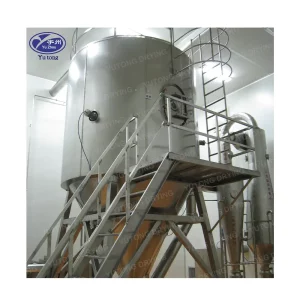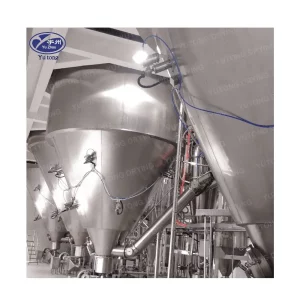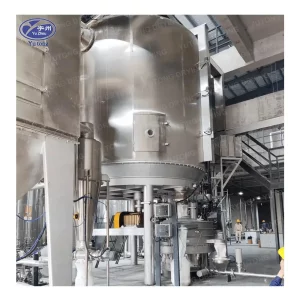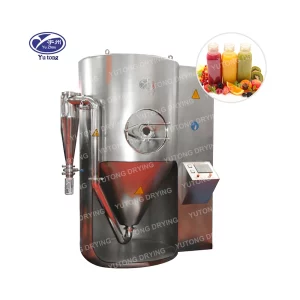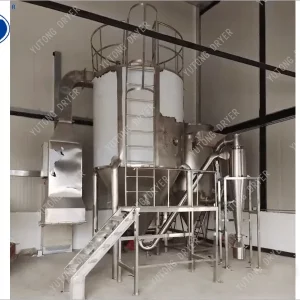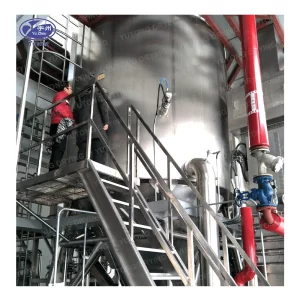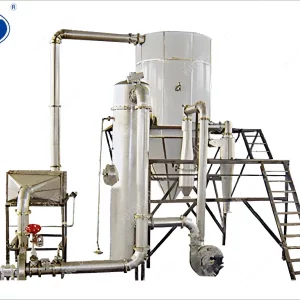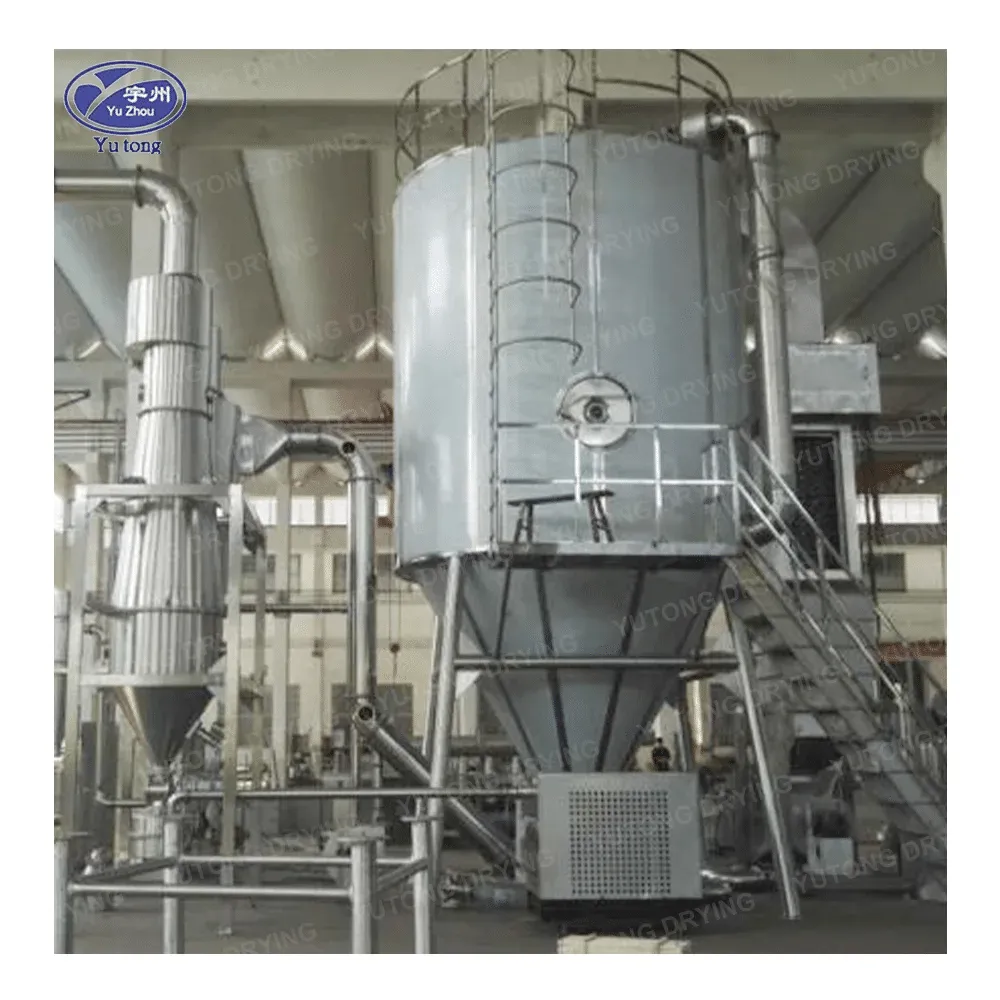Spray drying is a widely used process in various industries for converting liquid materials into dry powders. However, the cost of spray drying can be a significant consideration for businesses and researchers. In this article, we will explore the factors that contribute to the cost of spray drying and determine whether it can be considered expensive.
Spray drying is a method of rapidly drying a liquid by atomizing it into small droplets and exposing them to a hot gas stream. This process results in the formation of dry powders with desirable properties such as uniform particle size, high solubility, and good flowability. Spray drying is used in a wide range of applications, including food processing, pharmaceuticals, cosmetics, and chemical industries.
Factors Affecting the Cost of Spray Drying
1. Equipment Cost
The initial investment in spray drying equipment can be significant. Spray dryers come in different sizes and configurations, and the cost can vary depending on the capacity, features, and quality of the equipment. Larger spray dryers with higher production capacities generally cost more than smaller ones.
Additionally, the type of spray dryer can also affect the cost. There are different types of spray dryers, such as pressure nozzle spray dryers, centrifugal spray dryers, and fluidized bed spray dryers. Each type has its own advantages and disadvantages, and the cost can vary accordingly.
2. Energy Consumption
Spray drying is an energy-intensive process. The hot gas stream used to dry the droplets requires a significant amount of energy, usually in the form of heat. The cost of energy can be a major factor in the overall cost of spray drying.
The energy consumption depends on several factors, including the inlet and outlet temperatures of the gas stream, the moisture content of the feed material, and the production rate. Optimizing these parameters can help reduce energy consumption and lower the cost of spray drying.
3. Feed Material Characteristics
The properties of the feed material can also affect the cost of spray drying. Materials with high moisture content may require more energy to dry, increasing the cost. Additionally, materials that are difficult to atomize or have specific drying requirements may require specialized equipment or additional processing steps, which can add to the cost.
The viscosity and surface tension of the feed material can also affect the atomization process and the efficiency of the spray dryer. Materials with high viscosity or surface tension may require more energy to atomize, resulting in higher costs.
4. Operating and Maintenance Costs
Operating a spray dryer requires trained personnel and regular maintenance. The cost of labor, spare parts, and maintenance can add to the overall cost of spray drying. Additionally, proper cleaning and sanitation of the equipment are essential to ensure product quality and safety, which can also incur costs.
The frequency of maintenance and the availability of spare parts can also affect the cost. Some spray dryers may require more frequent maintenance or may have limited availability of spare parts, which can increase the cost of ownership.
5. Scale of Production
The scale of production can have a significant impact on the cost of spray drying. Larger production volumes can often result in economies of scale, reducing the cost per unit of product. However, setting up a large-scale spray drying operation requires a significant investment in equipment and infrastructure.
Small-scale production may be more expensive on a per-unit basis due to the higher fixed costs associated with smaller equipment and lower production volumes.
Cost Comparison with Other Drying Methods
To determine whether spray drying is expensive, it is useful to compare it with other drying methods. Some common drying methods include air drying, freeze drying, and vacuum drying.
1. Air Drying
Air drying is a simple and inexpensive method of drying materials by exposing them to air. However, it is a slow process and may not be suitable for materials that are sensitive to oxidation or require a specific particle size distribution.
Spray drying is generally faster and more efficient than air drying, but it comes at a higher cost. However, for some applications where speed and quality are important, spray drying may be the preferred method despite the higher cost.
2. Freeze Drying
Freeze drying is a process of drying materials by freezing them and then sublimating the ice under vacuum. This method results in high-quality powders with excellent preservation of the original properties of the material. However, freeze drying is a very expensive process due to the high energy consumption and long processing times.
Spray drying is generally less expensive than freeze drying, but it may not be suitable for materials that require the extremely low moisture content and high quality achieved by freeze drying.
3. Vacuum Drying
Vacuum drying is a method of drying materials under reduced pressure. This process can reduce the drying temperature and prevent oxidation of sensitive materials. However, vacuum drying is also an energy-intensive process and may require specialized equipment.
Spray drying can be more cost-effective than vacuum drying for some applications, especially when considering the speed and efficiency of the process. However, for materials that require a very low moisture content or specific drying conditions, vacuum drying may be the better option.
Cost Reduction Strategies
If the cost of spray drying is a concern, there are several strategies that can be employed to reduce the overall cost.
1. Optimize Process Parameters
By optimizing the inlet and outlet temperatures, gas flow rates, and atomization parameters, it is possible to reduce energy consumption and improve the efficiency of the spray dryer. This can result in significant cost savings over time.
Additionally, proper selection of the feed material and its preparation can also help improve the drying process and reduce costs. For example, pre-treating the material to reduce its moisture content or adjusting its viscosity can improve the atomization process and reduce energy consumption.
2. Use Alternative Energy Sources
Exploring the use of alternative energy sources such as solar or biomass can help reduce the cost of energy consumption in spray drying. Although the initial investment may be higher, these sources can provide long-term cost savings and reduce the environmental impact.
Additionally, energy recovery systems can be installed to capture and reuse the waste heat generated during the drying process, further reducing energy consumption and costs.
3. Consider Shared Facilities or Outsourcing
For small-scale production or occasional drying needs, it may be more cost-effective to use shared facilities or outsource the spray drying process to a specialized service provider. This can eliminate the need for a large initial investment in equipment and reduce the operating and maintenance costs.
When outsourcing, it is important to choose a reliable and experienced service provider to ensure product quality and safety.
4. Evaluate Equipment Options
Different types of spray dryers may have different cost-performance ratios. Conducting a thorough evaluation of the available equipment options and choosing the one that best meets your specific needs and budget can help reduce costs.
Consider factors such as production capacity, energy consumption, maintenance requirements, and ease of operation when evaluating equipment options.
Whether spray drying is expensive depends on several factors, including the equipment cost, energy consumption, feed material characteristics, operating and maintenance costs, and scale of production. Compared to other drying methods, spray drying can be more expensive in some cases, but it also offers unique advantages such as rapid drying, uniform particle size, and high product quality.
To determine if spray drying is the right choice for a particular application, it is important to consider the overall cost-benefit analysis. By optimizing process parameters, using alternative energy sources, considering shared facilities or outsourcing, and evaluating equipment options, it is possible to reduce the cost of spray drying and make it a more viable option for many businesses and researchers.

